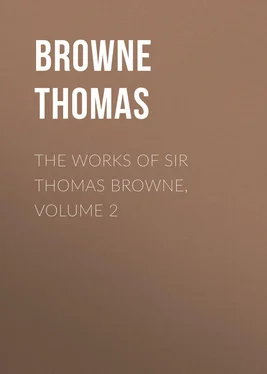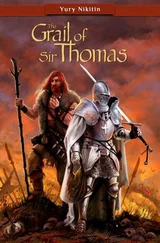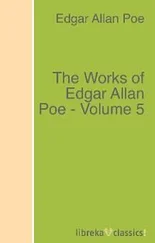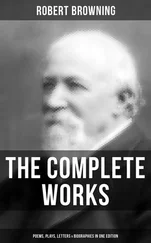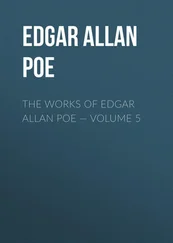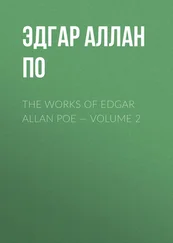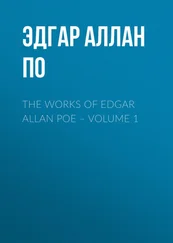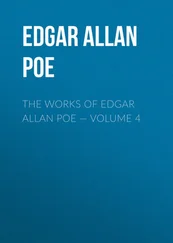Thomas Browne - The Works of Sir Thomas Browne, Volume 2
Здесь есть возможность читать онлайн «Thomas Browne - The Works of Sir Thomas Browne, Volume 2» — ознакомительный отрывок электронной книги совершенно бесплатно, а после прочтения отрывка купить полную версию. В некоторых случаях можно слушать аудио, скачать через торрент в формате fb2 и присутствует краткое содержание. ISBN: , Жанр: foreign_antique, foreign_prose, на английском языке. Описание произведения, (предисловие) а так же отзывы посетителей доступны на портале библиотеки ЛибКат.
- Название:The Works of Sir Thomas Browne, Volume 2
- Автор:
- Жанр:
- Год:неизвестен
- ISBN:http://www.gutenberg.org/ebooks/39961
- Рейтинг книги:5 / 5. Голосов: 1
-
Избранное:Добавить в избранное
- Отзывы:
-
Ваша оценка:
- 100
- 1
- 2
- 3
- 4
- 5
The Works of Sir Thomas Browne, Volume 2: краткое содержание, описание и аннотация
Предлагаем к чтению аннотацию, описание, краткое содержание или предисловие (зависит от того, что написал сам автор книги «The Works of Sir Thomas Browne, Volume 2»). Если вы не нашли необходимую информацию о книге — напишите в комментариях, мы постараемся отыскать её.
The Works of Sir Thomas Browne, Volume 2 — читать онлайн ознакомительный отрывок
Ниже представлен текст книги, разбитый по страницам. Система сохранения места последней прочитанной страницы, позволяет с удобством читать онлайн бесплатно книгу «The Works of Sir Thomas Browne, Volume 2», без необходимости каждый раз заново искать на чём Вы остановились. Поставьте закладку, и сможете в любой момент перейти на страницу, на которой закончили чтение.
Интервал:
Закладка:
As for the mutation of sexes, or transition into one another, we cannot deny it in Hares, it being observable in Man. For hereof beside Empedocles or Tiresias , there are not a few examples: and though very few, or rather none which have emasculated or turned women, yet very many who from an esteem or reality of being Women have infallibly proved Men. Some at the first point of their menstruous eruptions, some in the day of their marriage, others many years after: which occasioned disputes at Law, and contestations concerning a restore of the dowry. And that not only mankind, but many other Animals may suffer this transexion, we will not deny, or hold it at all impossible: although I confess by reason of the postick and backward position of the feminine parts in quadrupedes, they can hardly admit the substitution of a protrusion, effectual unto masculine generation; except it be in Retromingents, and such as couple backward.
Nor shall we only concede the succession of sexes in some, but shall not dispute the transition of reputed species in others; that is, a transmutation, or (as Paracelsians term it) Transplantation of one into another. Hereof in perfect Animals of a congenerous seed, or near affinity of natures, examples are not unfrequent, as in Horses, Asses, Dogs, Foxes, Pheasants, Cocks, etc. but in imperfect kinds, and such where the discrimination of sexes is obscure, these transformations are more common; and in some within themselves without commixtion, as particularly in Caterpillars or Silkworms, wherein there is a visible and triple transfiguration. But in Plants, wherein there is no distinction of sex, these transplantations are conceived more obvious then any; as that of Barley into Oats, of Wheat into Darnel; and those grains which generally arise among Corn, as Cockle, Aracus, Ægilops, and other degenerations; which come up in unexpected shapes, when they want the support and maintenance of the primary and master-forms. And the same do some affirm concerning other Plants in less analogy of figures; as the mutation of Mint into Cresses, Basil into Serpoile, and Turneps into Radishes. In all which, as Severinus conceiveth,In Idea Medicinæ Philosophicæ. there may be equivocal seeds and Hermaphroditical principles, which contain the radicality and power of different forms; thus in the seed of Wheat there lieth obscurely the seminality of Darnel, although in a secondary or inferiour way, and at some distance of production; which nevertheless if it meet with convenient promotion, or a conflux and conspiration of causes more powerful then the other, it then beginneth to edifie in chief, and contemning the superintendent form, produceth the signatures of its self.
Now therefore although we deny not these several mutations, and do allow that Hares may exchange their sex, yet this we conceive doth come to pass but sometimes, and not in that vicissitude or annual alteration as is presumed. That is, from imperfection to perfection, from perfection to imperfection; from female unto male, from male to female again, and so in a circle to both without a permansion in either. For beside the inconceivable mutation of temper, which should yearly alternate the sex, this is injurious unto the order of nature, whose operations do rest in the perfection of their intents; which having once attained, they maintain their accomplished ends, and relapse not again into their progressional imperfections. So if in the minority of natural vigor, the parts of seminality take place; when upon the encrease or growth thereof the masculine appear, the first design of nature is atchieved, and those parts are after maintained.
But surely it much impeacheth this iterated transexion of Hares, if that be true which Cardan and other Physicians affirm, that Transmutation of sex is only so in opinion; and that these transfeminated persons were really men at first; although succeeding years produced the manifesto or evidence of their virilities. Which although intended and formed, was not at first excluded: and that the examples hereof have undergone no real or new transexion, but were Androgynally born, and under some kind of Hermaphrodites . For though Galen do favour the opinion, that the distinctive parts of sexes are only different in Position, that is, inversion or protrusion; yet will this hardly be made out from the Anatomy of those parts. The testicles being so seated in the female, that they admit not of protrusion; and the neck of the matrix wanting those parts which are discoverable in the organ of virility.
The second and most received acception, is, that Hares are male and female by conjunction of both sexes; and such as are found in mankind, Poetically called Hermaphrodites; supposed to be formed from the equality, or non victorie of either seed; carrying about them the parts of Man and Woman; although with great variety in perfection, site and ability; not only as Aristotle conceived, with a constant impotency in one; but as later observers affirm, sometimes with ability of either venery. And therefore the providence of some Laws have thought good, that at the years of maturity they should elect one sex, and the errors in the other should suffer a severer punishment. Whereby endeavouring to prevent incontinency, they unawares enjoyned perpetual chastity; for being executive in both parts, and confined unto one, they restrained a natural power, and ordained a partial virginity. Plato and some of the Rabbins proceeded higher; who conceived the first Man an Hermaphrodite; and Marcus Leo the learned Jew , in some sense hath allowed it; affirming that Adam in one suppositum without division, contained both Male and Female. And therefore whereas it is said in the text, That God created man in his own Image, in the Image of God created he him, male and female created he them: applying the singular and plural unto Adam , it might denote, that in one substance, and in himself he included both sexes, which was after divided, and the female called Woman. The opinion of Aristotle extendeth farther, from whose assertion all men should be Hermaphrodites; for affirming that Women do not spermatize, and confer a place or receptacle rather then essential principles of generation, he deductively includes both sexes in mankind; for from the father proceed not only males and females, but from him also must Hermaphroditical and masculo-feminine generations be derived, and a commixtion of both sexes arise from the seed of one. But the Schoolmen have dealt with that sex more hardly then any other; who though they have not much disputed their generation, yet have they controverted their Resurrection, and raisen a querie, whether any at the last day should arise in the sex of Women; as may be observed in the supplement of Aquinas .
Now as we must acknowledge this Androgynal condition in Man, Consisting of man and woman. so can we not deny the like doth happen in beasts. Thus do we read in Pliny , that Neroes Chariot was drawn by four Hermaphroditical Mares, and Cardan affirms he also beheld one at Antwerp . And thus may we also concede, that Hares have been of both sexes, and some have ocularly confirmed it; but that the whole species or kind should be bisexous or double-sexed, we cannot affirm, who have found the parts of male and female respectively distinct and single in any wherein we have enquired: And the like success had Bacchinus Bacch. De Hermaphroditis. in such as he dissected. And whereas it is conceived, that being an harmless Animal and delectable food unto man, nature hath made them with double sexes, that actively and passively performing they might more numerously increase; we forget an higher providence of nature whereby she especially promotes the multiplication of Hares, which is by superfetation; that is, a conception upon a conception, or an improvement of a second fruit before the first be excluded; preventing hereby the usual intermission and vacant time of generation; which is very common and frequently observable in Hares, mentioned long ago by Aristotle , Herodotus , and Pliny ; and we have often observed, that after the first cast, there remain successive conceptions, and other younglings very immature, and far from their term of exclusion.
Читать дальшеИнтервал:
Закладка:
Похожие книги на «The Works of Sir Thomas Browne, Volume 2»
Представляем Вашему вниманию похожие книги на «The Works of Sir Thomas Browne, Volume 2» списком для выбора. Мы отобрали схожую по названию и смыслу литературу в надежде предоставить читателям больше вариантов отыскать новые, интересные, ещё непрочитанные произведения.
Обсуждение, отзывы о книге «The Works of Sir Thomas Browne, Volume 2» и просто собственные мнения читателей. Оставьте ваши комментарии, напишите, что Вы думаете о произведении, его смысле или главных героях. Укажите что конкретно понравилось, а что нет, и почему Вы так считаете.
